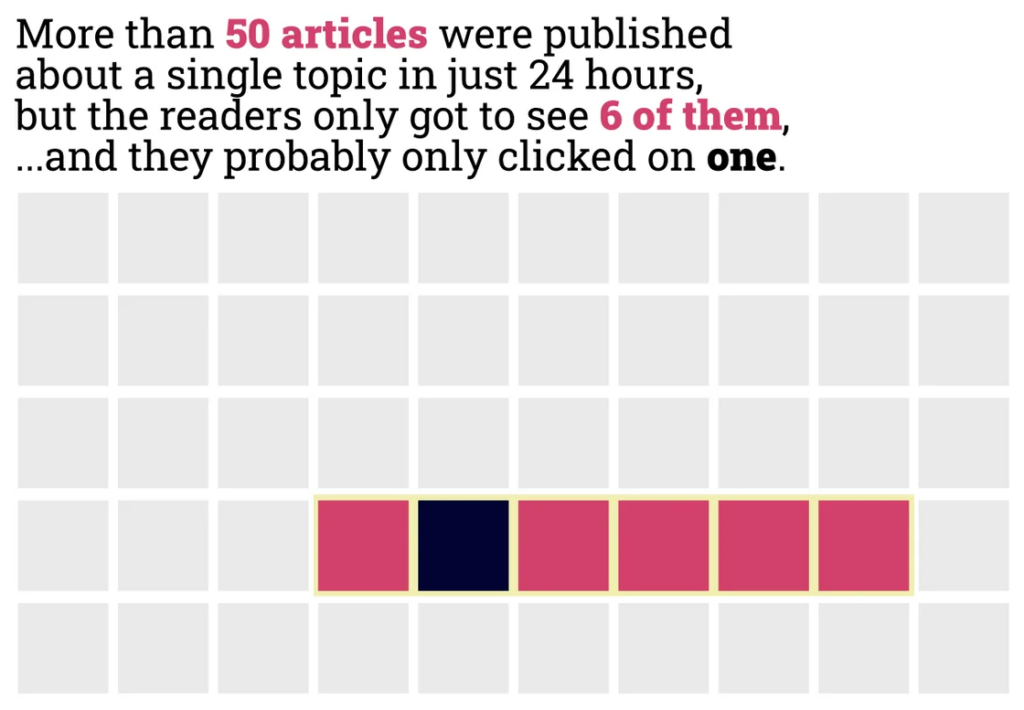

You're reading The Audiencers' newsletter #44 sent out on August 7th, 2024. To receive future newsletters straight to your inbox every two weeks, sign up here.
I don’t know what it’s like where you are, but in France, the internet basically switches off in August. Come the 1st of the month and the streets of Paris are empty, shops closed and trains to the south are packed with holiday goers.
As Marion put it, I’m not “French-enough” yet to take the month off (i.e. she has kids and I don’t 😅), so I’ll still be here, typing away with the Olympics on in the background whilst Marion escapes to the middle-of-nowhere with a book.
So from Marion and I, we hope you have a wonderful, very relaxing summer break! 🌞
In today’s newsletter:
- Innovating with AI, the impressive work of Aftonbladet
- Readers bypassing paywalls: is it really that big of a problem?
- Newspapers are not a news feed. It’s a news service.
- A project for the summer calm: optimize your newsletter landing page
- Events to book for the coming months
Innovating with AI, the impressive work of Aftonbladet
“We shouldn’t use generative AI just to create even more content.” Martin Schori and the AI team at Aftonbladet are going beyond the standard AI use cases to not only develop and implement editorial tools for internal use, but also services and products for the audience.
For instance, a chatbot for the EU elections:

> The idea was to test this idea for elections (typically not a very engaging news event for the audience) and then scale it up for other events
> Importantly, the bot can only use data that they put in: official data from the European Union and political parties’ websites, plus additional interviews and surveys with each party. So it’s actual journalism.
> It’s also instructed not to hallucinate. If it doesn’t have an answer, it has to say that
> It actually turned out to be very successful – they had 160,000 questions and it’s proven valuable for driving engagement
Find the full interview by Anabelle Nicoud on The Audiencers
Readers bypassing paywalls: is it really that big of a problem?
One of the highest search results around the keyword ‘paywall’ is bypass…

It does hurt slightly, doesn’t it. When we spend so much time perfecting the conversion journey and developing our premium products. Not to mention paying our journalists and audience teams.
Given this, it’s not surprising that questions over how to prevent paywall bypassing come up pretty regularly amongst our clients & readers. But, contrary to many consumptions, bypassing may not be as problematic as it seems, and actually there’s a lot more at play that you need to consider, such as SEO, technical implications and user experience.
A quick low-down on blocking methods:
-> User-side: content still exists on the page, in the underlying HTML, but is hidden and unavailable to users. When a visitor arrives on the page, the whole content is delivered. The server checks to see if the user has permission to access this article, and blocks it with the paywall if not. This can be achieved with CSS or Javascript.
✅ Simple tech integration
✅ Low risk to SEO
✅ Better UX (no lagging for instance)
❌ Javascript can lead to possible conflicts with ad servers
❌ Easiest to bypass (CSS in particular)
-> Server-side: blocking the content before the page itself. The majority of the time this involves sending two pages to the server – the full content and a cropped one. The cropped page is sent by default to all users and, when the user passes through the paywall and becomes a subscriber, they’ll be presented with the full page.
✅ More secure method for avoiding bypassing
❌ Harder to integrate
❌ Can have the greatest impact on SEO (if no optimization is done)
So, the question isn’t just about whether your paywall can by bypassed or not, but what else is at play, and how important these factors are to your business model?
Plus, are visitors who put the effort and potentially heavy tech knowledge into bypassing your paywall ever going to pay to subscribe? If they aren’t a potential future subscriber then perhaps using a tougher blocking method to reduce bypassing isn’t worth the possible negative effects on your SEO.
Although, we can complicate matters further by questioning whether we really understand the depth of the problem – how many publishers have an accurate read on the number of readers bypassing their paywall?
A question for the audience maybe… Let me know your thoughts, blocking method & whether you’ve been able to measure how many readers bypass your walls
> Dive deeper in this article on The Audiencers
Newspapers are not a news feed. It’s a news service.
A Danish media published 50 articles on the attempted assassination of a US Presidential candidate in just 24 hours, with only 6 being featured on the home page…

Why is this a problem?
> It’s wasteful: “Imagine if you were a shipping company. This would be like sending out 50 trucks with packages on a route, but each truck only carries a handful of packages. This is fundamentally not an economically sound way to run a company.” Thomas Baekdal shares
> It’s confusing for readers: “If you take a topic and atomize that into 50 stories, the six stories that people do see won’t really give people the clarity they need to understand the topic. And worse, the one article they choose to read will feel woefully uninformative because it’s only focusing on a small part of it.”
> Burn out: “It makes the reader feel overwhelmed (in a negative way) and confused. They see the volume, but each item isn’t useful in itself, and we provide very poor guidance as to how to get the full story.”
The solution?
According to Thomas, we need to move away from the idea that news should be presented as a feed and instead start to develop news that provides a far more specific service.
> In terms of metrics, the key is to define success by what share of your total audience read each article
> You can dramatically reduce the number of articles you publish without losing traffic or subscribers, we saw this with The New Statesman for instance
> Be sure to analyze how your audience are actually consuming news
> Thomas suggests summary pages to allow readers to feel instantly informed
What did LinkedIn have to say about it?
> Corentin Mirande “produce less but take the time to optimize your content pieces to answer your audience’s expectations. It’s better to have 10 pages getting thousands of traffic than 100 pages getting no traffic!”
> David Jansson: It’s important to highlight the unique position of Nordic media. “Many Nordic newspapers do not have to focus so much on quality content and engagement since they get press support from the taxpayers.”
A project for the summer calm: optimize your newsletter landing page
Lennart is back with another brilliant article, this time providing a ready-made check list of essentials for your newsletter landing page, built after benchmarking from many of the best in the business.
And with the summer calm you have the perfect moment to put this content to use in optimizing your own newsletter page (I’m working through it myself as we’re the first to admit our newsletter page needs work).
> The check list is ready for you here
I
Events to add to your calendar & meet one of our team:
- Revenue Europe, Berlin, October 1st (I’ll be speaking!)
- Twipe Digital Growth Summit 2024, Brussels, October 8th
- The Audiencers’ 2nd Birthday in London 🥳 October 11th, info coming soon
- WAN-IFRA Newsroom Summit, Zurich, October 21-23
The Audiencers’ newsletter: from professionals to professionals
Sign up to our newsletter – real-life examples, expert points of view and inspirations from publishers around the world to help you do your job better. Sent every two weeks.


